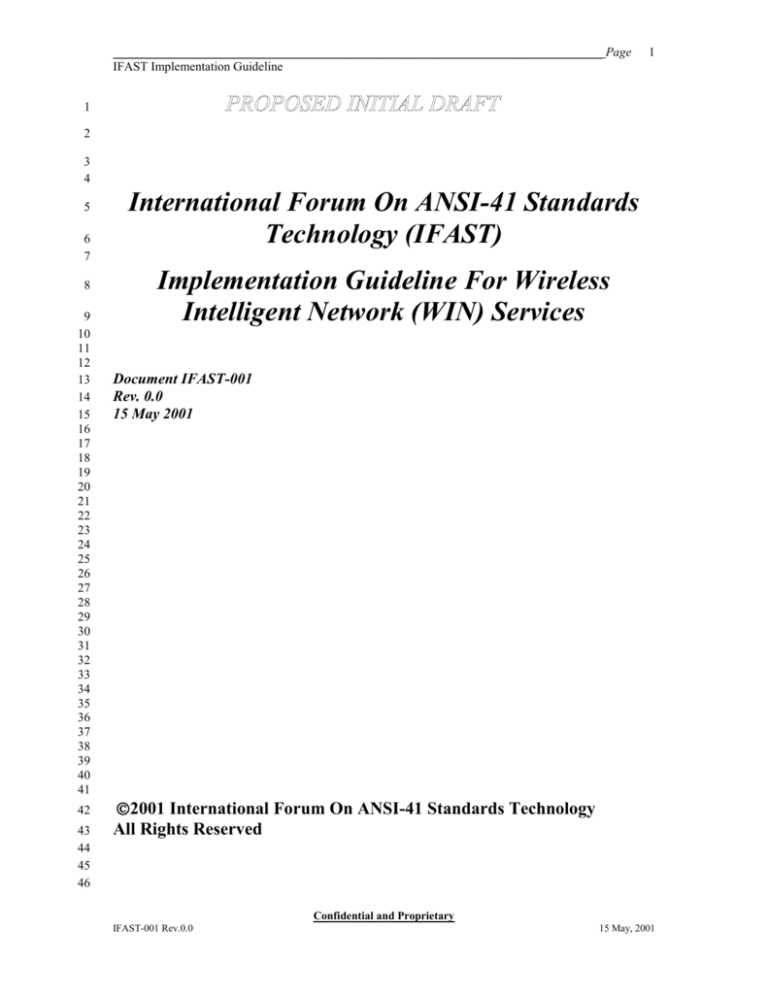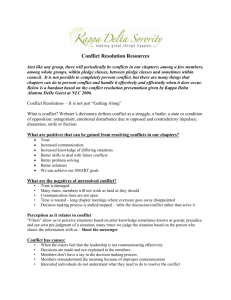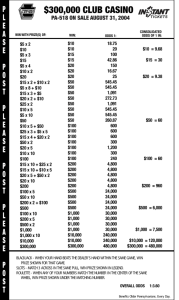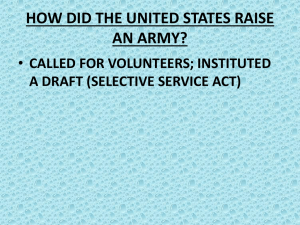
______________________________________________________________________________ Page
IFAST Implementation Guideline
1
1
2
3
4
5
6
7
8
9
10
11
12
13
14
15
16
17
18
19
20
21
22
23
24
25
26
27
28
29
30
31
32
33
34
35
36
37
38
39
40
41
42
43
44
45
46
International Forum On ANSI-41 Standards
Technology (IFAST)
Implementation Guideline For Wireless
Intelligent Network (WIN) Services
Document IFAST-001
Rev. 0.0
15 May 2001
2001 International Forum On ANSI-41 Standards Technology
All Rights Reserved
Confidential and Proprietary
IFAST-001 Rev.0.0
15 May, 2001
______________________________________________________________________________ Page
IFAST Implementation Guideline
1
2
Revision History
Date
15 May 2001
dd mm yyyy
3
4
5
6
7
8
9
10
11
12
13
14
15
16
17
18
19
20
21
22
23
24
25
26
27
28
29
30
31
32
33
34
35
36
37
38
39
40
41
42
43
2
Revision
Rev. 0.0
Rev. 1.0
Description
Initial Document
First Revision
Acknowledgments
This section provides a list of Names and their Companies who make
contributions to this document.
Notice
Publication and distribution of this document by the above Contributors does not
constitute any commitment by them to design, develop, purchase or implement
the products and services described herein. The Contributors reserve the right to
change the requirements listed herein in any manner at any time without notice.
The Contributors make no express or implied warranties in regard to the use of
these materials, including without limitation, any errors or in or omission from
this document.
Publication and distribution of this document should not be construed as
conferring any license or other proprietary interest to the intellectual property
contained herein, whether by implication, estoppel, or otherwise.
Grant Of License
The Contributors grant a free, irrevocable license to the International Forum on
ANSI-41 Standards Technology (IFAST) to incorporate text contained in the
contribution and any modifications thereof in the creation of an IFAST
publication; to copyright in IFAST’s name any IFAST publication even though it
may include portions of the contribution; and at IFAST’s sole publication even
though it may include portions of this contribution; and at IFAST’s sole discretion
to permit others to reproduce in whole or in part the resulting IFAST publication.
IRP Declaration
The Contributors agree to abide by the IFAST Intellectual Property Rights (IPR)
policy.
Confidential and Proprietary
IFAST-001 Rev.0.0
15 May, 2001
______________________________________________________________________________ Page
IFAST Implementation Guideline
3
Contents
1
2
3
4
5
6
7
8
9
10
11
12
13
14
15
16
17
18
19
20
21
22
23
24
25
26
27
28
29
30
31
32
33
34
35
36
37
38
39
40
41
42
43
44
45
46
Section 1
Introduction
Section 2
Overview
2.1
2.2
Section 3
3.1
3.2
3.3
Architectural Structure
Call Process
Implementation
Strategy
Option
Installation
Section 4
Standards
Section 5
Availability
Section 6
Testing
Section 7
Issues
Appendices
A1
Potential WIN Services
Glossary
References
Confidential and Proprietary
IFAST-001 Rev.0.0
15 May, 2001
______________________________________________________________________________ Page
IFAST Implementation Guideline
1
4
Figures
2
Figure 1
Figure 2
Figure 3
Figure 4
3
4
5
6
Network Physical Model
Network Functional Model
Network Reference Model
Functional Interconnection
7
8
Tables
9
10
11
12
13
14
15
16
17
18
19
20
21
22
23
24
25
26
27
28
29
30
31
32
33
34
35
36
37
38
39
40
41
42
43
Confidential and Proprietary
IFAST-001 Rev.0.0
15 May, 2001
______________________________________________________________________________ Page
IFAST Implementation Guideline
1
2
3
4
5
6
7
8
9
10
11
12
13
14
15
16
17
18
19
20
21
22
23
24
25
26
27
28
29
30
31
32
33
34
35
36
37
38
39
40
41
42
43
44
45
46
47
5
SECTION 1 INTRODUCTION
Wireless Intelligent Network (WIN) is based on an open industry standard
that enables equipment from different suppliers to interoperate
successfully, and allows automatic roaming between various networks.
WIN standard is part of the ANSI-41 family of standards, that allows
additions of capabilities to any existing ANSI-41-based network within an
open vendor environment, to ensure full interoperability with third-party
products and services.
During the past several years, the wireless industry has been actively
developing WIN capabilities which can be overlaid onto an existing
wireless network. Network operators will be able to add WIN capabilities
to any ANSI-41 based wireless networks by upgrading switching systems,
typically with software upgrades, and installing new network elements
such as Service Control Points (SCPs), Service Nodes (SNs), or Intelligent
Peripherals (IPs). Further deployment of WIN additional capabilities will
allow operators to create and deploy value-added services and enhanced
features rapidly and at low costs.
The SCP platform in the WIN architecture reuses the hardware and
software components deployed in a building block approach to lower WIN
investment requirements while measurably reducing service time to
market. The platform is scalable to allow capacity additions and flexible
enough to provide multiple applications to meet changing subscriber and
market demands. Innovative WIN solutions can now be deployed for
networks based on AMPS, Code Division Multiple Access (CDMA), or
Time Division Multiple Access (TDMA) technology to satisfy 800 or
1900 MHz requirements.
Most of the current Wireless services are switch-based (eg Call Waiting),
Home Location Register (HLR) based (eg Call Delivery, Call
Forwarding), or built on specialized platforms (eg Short Message Service,
Prepaid Charging). Any or all of these existing services, plus many new
services, could be built on WIN platforms, when they are migrated to a
SCP-based service logic. All of the specialized resources required to
support advanced/value-added services can also be built on a stand-alone
Intelligent Peripheral platform that allows the resources to be shared by all
WIN services. This reduces the cost to the network operator as the costs
of the resource are spread over more applications. Some of the resources
that may be IP-based include announcement machines, speech recognition
devices, store-and-forward equipment, or voice mail systems.
Confidential and Proprietary
IFAST-001 Rev.0.0
15 May, 2001
______________________________________________________________________________ Page
IFAST Implementation Guideline
6
The WIN capabilities which have been developed so far are “service
independent”. The following is a list of general description of potential
services using the WIN capabilities:
1
2
3
4
5
6
7
8
9
10
11
12
13
14
15
16
17
18
19
20
21
22
23
24
25
26
27
28
29
30
31
32
33
34
35
36
37
38
39
40
41
42
43
44
45
46
Communication Management Services (CMS):
Include incoming call screening and call barring to allow subscribers
to manage the calls they receive. Incoming calls can be handled
normally, routed to voice mail, forwarded to another number or alert
the subscriber with a special ring.
Personal Numbering Services (aka Universal Access Numbers):
Allow subscribers to have a single number that roams with them
worldwide.
Short Message Services (SMS):
Provide alphanumeric paging, news and local traffic reports or tourist
information based on the subscriber's current location.
Traditional Intelligent Network Services:
include calling name presentation, calling name restriction, freephone
(800 service) and other features.
Prepaid Services:
Provide subscribers who want multiple wireless phones the ability to
control costs.
Wireless Group Conferencing Services:
Allow subscribers to arrange conference calls with multiple parties by
dialing a few digits, and also enable them to set a large list of
predefined groups and conference individuals into a call even while
roaming.
Mobile Virtual Private Network (VPN) Services:
Enable subscribers to customize dialing and numbering plans to create
VPNs for businesses, families, campuses or community groups,
including the capability of abbreviated dialing, and
permissive/restrictive dialing, and allow companies to easily control
the routing of calls on or off their corporate networks.
Information Messaging Services (IMS):
Provide e-mail, Web page messages, or virtually any kind of
information, from stock quotes and traffic reports to flight information
and updates about news, sports or entertainment, delivered directly to
subscriber handsets via short message service, with automatic
confirmation upon receipt of messages. These services could be further
extended for future data and multimedia capabilities such as text-tospeech messages via phone, Internet browsing and two-way messaging
capabilities, thus allowing subscribers to control when, where and
what information they receive.
Voice Recognition Services (VRS):
Give subscribers easy access with sophisticated voice and digit
recognition capabilities, for hands-free operation while simplifying the
management of personal directories.
Confidential and Proprietary
IFAST-001 Rev.0.0
15 May, 2001
______________________________________________________________________________ Page
IFAST Implementation Guideline
1
2
3
4
5
6
7
8
9
10
11
12
13
14
15
16
17
18
19
20
21
22
23
24
25
26
27
28
29
30
31
32
33
34
35
36
37
38
39
40
41
42
43
44
45
46
7
Location Based Solutions Services:
Include additional safety-related tracking or alert services that pinpoint
subscriber locations in any emergency situation, and enable
companies, by employing location-sensitive technologies, to manage
fleet tracking, offer home-zone billing options, provide roadside
assistance or deliver location-driven consumer information.
For more details of each individual service, please refer to Appendix A1.
Essentially, the potential benefits of deploying a service based on WIN
platforms are:
New services can be created, implemented, tested, modified quickly;
Seamless roaming can be provided at low costs;
“Virtual Home Environment” can be offered in such that the customer
experiences the same user interface in any market;
Services can be tailored to small groups if desired.
It should be emphasized, however, that although the WIN will offer many
benefits in terms of service offering, each of the service offerings must be
assessed individually to determine whether WIN platforms or current
technologies would be most suitable.
Confidential and Proprietary
IFAST-001 Rev.0.0
15 May, 2001
______________________________________________________________________________ Page
IFAST Implementation Guideline
1
2
3
4
5
6
7
8
9
10
11
12
13
14
15
16
17
18
19
20
21
22
23
24
25
26
27
28
29
30
31
32
33
34
35
36
37
38
39
40
41
42
43
44
45
46
8
SECTION 2 OVERVIEW
2.1
Architectural Structure
Most modern telecommunications networks are evolving towards a
layered model known as “Advanced Intelligent Network”. The network is
vertically layered, with each performing a specific function. Typically the
model comprises six layers. These are the User, Access,
Switching/Transport, Intelligent, Management/Service, and Billing layers
as shown in Figure 1.
Figure 1
Network Physical Model
Billing Layer
DMH
SMS
IP
Switching/Transport Layer
Access Layer
MSC
SSP/
SCP
STP
TS/
Management/Service Layer
SCE
HLR
Core
Network
MSC
SSP/
Wireless
PABX
Radio Base
Station
Intelligent Layer
Microcell
Controller
Access
Network
User Layer
Billing Layer:
Data Message Handlers (DMH) is responsible for Billing Systems, Fraud
Management Systems, and other non-call-related systems requiring that
call detail records be generated, collected, rated and transferred from the
network to these external systems.
Management/Service Layer:
The Service Management System (SMS) is responsible for managing
services at every node in the network by updating the databases, and the
Service Creations Environment (SCE) for creation of new services by
updating the service logic.
Confidential and Proprietary
IFAST-001 Rev.0.0
15 May, 2001
______________________________________________________________________________ Page
IFAST Implementation Guideline
1
2
3
4
5
6
7
8
9
10
11
12
13
14
15
16
17
18
19
20
21
22
23
24
25
26
27
28
29
30
31
32
33
34
35
36
37
38
39
40
41
42
43
44
45
46
9
Intelligent Layer:
The Service Control Point (SCP) is essentially a transaction processor,
receiving requests for service and data from other nodes and processing
them in real time. Associated with SCP are the Home Location Register
(HLR) which is the subscribers home mobility manager to serve as the
database for permanent subscriber profile information; and the Intelligent
Peripheral (IP), which performs specialized functions such as playing and
recording announcements and messages, translating speech to data and
vice versa, or storing and forwarding data messages.
Switching/Transport Layer:
The Mobile Switching Centre/Service Switching Point (MSC/SSP)
executes each call attempt, requesting other nodes to perform tasks when
asked for. MSC functions are related to radio resource management and
switching, while SSP controls services and actually communicates with
the other nodes in the network.
Access Layer:
The primary function of the Radio Base Station (RBS), Microcell
Controller (MCC), or Wireless PBX is radio resource management.
User Layer:
This layer represents the mobile stations/terminals used by customer to
access the network.
(Note: Need contributions for enhancements to the description/explanation)
Confidential and Proprietary
IFAST-001 Rev.0.0
15 May, 2001
______________________________________________________________________________ Page 10
IFAST Implementation Guideline
1
2
3
4
5
6
7
8
9
10
11
12
13
14
15
16
17
18
19
20
21
22
23
24
25
26
27
28
29
30
31
32
33
34
35
36
37
38
39
40
41
42
43
44
45
46
A functional reference model for WIN is shown in Figure 2. The layers
within the network contain only the functionality required by the layer.
This abstraction helps the network architect to map the functionality to the
actual network elements that provide the functionality.
Figure 2
SMAF
Network Functional Model
SMF
SCEF
Maintenance
to any FE
SDF
SCF
SCF
LRFH
SSF
CCF
ACF
SRF
CCF
LRFV
RACF
RCF
LRFM
ACF
RACF
RTF
Legend
ACF
CCF
FE
LRF
H
LRF
V
LRF
M
RACF
RCF
RTF
SCEF
SCF
SDF
SMAF
SMF
SRF
SSF
Authentication Control Function
Call Control Function
Functional Entity
Location Registration Function - HLR
Location Registration Function - VLR
Location Registration Function - MSC
Radio Access Control Function
Radio Control Function
Radio Terminal Function
Service Creation Environment Function
Service Control Function
Service Data Function
Service Management Access Function
Service Management Function
Specialized Resource Function
Service Switching Function
MSC
(Note: Need contributions for description/explanation)
Confidential and Proprietary
IFAST-001 Rev.0.0
15 May, 2001
______________________________________________________________________________ Page 11
IFAST Implementation Guideline
1
2
3
4
5
6
7
8
9
10
11
12
13
14
15
16
17
18
19
20
21
22
23
24
25
26
27
28
29
30
31
32
33
34
35
36
37
38
39
40
41
42
43
44
45
46
In the Network Functional Model, entities are defined purely in terms of
their functionality, while the physical entities are defined in the Network
Physical Model. One of the most important aspects of the WIN
implementation is to “map” the functional entities to the physical entities.
Once the industry has reached consensus on this mapping, equipment
designers will have more flexibility in developing the appropriate
platforms. It will be much easier to make platforms from different
suppliers to inter-operate, and to allow service developer to specify the
location of the functional entities more precisely. Figure 3 illustrates an
industry’s proposal of such mapping.
Figure 3
Network Reference Model
IP
To
HLR
SCP
C2
SN
SDF
SDF
C3
SRF
Exte rna l
Ne tworks
(PSPDN, PSTN,
ISDN)
Pi
CCF
Ai
C7
SCF
To
HLR
SCF
C4
SRF
Di
C5
C1
C6
CCAF
MSC
Pi
MS
BTS
Um
Abis
A
RCF
RTF
SSF
BSC
CCF
Ai
RACF
RACF
MMF
Di
F
C
EIR
AC
B
HLR
VLR
HLRF
SDF
SDF
H
SCF
SDF
D
MMF
To
VLR
G
SCF
MMF
IP
SCP
SN
PSTN
ISDN
PSPDN
Intelligent Peripheral
Service Control Point
Service Node
Public Switched
Telephone Network
Integrated Services
Digital network
Public Switched
Packet Data Network
MS
BTS
BSC
MSC
EIR
AC
HLR
VLR
Mobile Station
Base Transceiver Station
Base Station Controller
Mobile Switching Centre
Equipment Identity Register
Authentication Center
Home Location Register
Visitor Location Register
(Note: Need contributions for description/explanation)
Confidential and Proprietary
IFAST-001 Rev.0.0
15 May, 2001
______________________________________________________________________________ Page 12
IFAST Implementation Guideline
1
2
2.2
Call Process
In a WIN-capable network, the switching platform uses WIN call
processing triggers and ANSI-41 messaging to access a range of
SCPs, IPs or SNs based intelligent network services. This switch
trigger approach allows optimum use of network resources while
giving wireless subscribers access to the services that could
previously only be provided with wireline intelligent networks.
3
4
5
6
7
8
9
10
11
12
13
14
15
16
17
18
19
The WIN triggers initiate an array of services based on call-related
activities including billing, feature requests, origination,
termination, mobile and registration, etc. Origination and
termination triggers eliminate the need for subscribers to enter
complicated feature codes and can provide simple access to
abbreviated dialing, voice dialing and other enhanced features or
advanced/value-added services. Termination triggers route callers
to subscriber features such as incoming call screening, group
ringing and distinctive ringing. Mobility-related triggers manage
roaming, and mid-call triggers detect and confirm prepaid and
other enhanced features or advanced/value-added services.
20
21
22
23
24
25
26
27
28
All calls are processed based on the standardized call models,
called Basic Call State Model (BCSM). Inside the BCSM,
Detection Points are defined to allow WIN service logic to control
how a call is handled. Triggers are defined in the Detection Point
in certain “point in call” for control transfer from the MSC to WIN
service logic outside the MSC. Triggers can be defined for a single
subscriber as well as a group of subscribers. Based on these
capabilities, the WIN DFP provides distributed service control
during call processing.
29
30
31
32
33
34
35
36
37
38
39
40
Briefly, Mobile Switching Centers (MSCs) process both
originating and terminating calls in a standard format, and check to
see if “triggers” are active at each step. A “trigger” is defined in a
subscriber’s profile for specific WIN services, and is a specific
condition which may or may not exist at a given stage of a call. If
a trigger is active and a condition is met, the MSC will contact a
Service Interaction Manager (SIM) located on a Service Control
Point (SCP) to be find out what to do next in the processing. The
SCP is defined in SCP to coordinate multiple WIN services that
use the same trigger. The SIM will contact Flexible Service Logic
Programs (FSLPs) to do “feature processing,” collect the results,
and send a reply to the MSC to be executed.
41
42
Confidential and Proprietary
IFAST-001 Rev.0.0
15 May, 2001
______________________________________________________________________________ Page 13
IFAST Implementation Guideline
Figure 4
1
2
Functional Interconnection
SCF
FSLP i
SCF
FSLP j
FSLP k
FSLP x
SIM
FSLP y
FSLP z
SIM
SSF/CCF
CCF
FSLP
SCF
SIM
SSF
Legend
Ca ll Control Functi on
Feature Ser vice Logic Program
Servi ce Control Function
Servi ce Interactions Manager
Servi ce Switch ing Function
3
4
5
6
7
Each subscriber can have a different set of triggers active, and could have
a different set of service logic active for each subscriber, so WIN features
can be incredibly flexible (and incredibly complicated!).
8
9
10
11
12
13
During call processing, when a trigger is armed and the condition is met,
the MSC will stop processing the call and launch a query to the WIN
service logic as defined in the TIA/EIA IS-771 WIN standards. The WIN
service logic will process the request and instruct the MSC to continue call
processing according to the instruction. The standards define a set of
network capabilities based on three service drivers:
14
Incoming Call Screening
15
Voice Activated Services
16
Calling Name Presentation
17
Capabilities developed for these three service drivers can also be used to
develop other WIN services.
18
19
20
21
(Note: Need contributions for enhancements to this Section)
Confidential and Proprietary
IFAST-001 Rev.0.0
15 May, 2001
______________________________________________________________________________ Page 14
IFAST Implementation Guideline
1
2
3
4
5
6
7
8
9
10
11
12
13
14
15
16
17
18
19
20
21
22
23
24
25
26
27
28
29
30
31
32
33
34
35
36
37
SECTION 3 IMPLEMENTATION
This section discusses general implementation issues, and covers
information that should be shared with roaming partner companies.
However, this section excludes the discussion on how to implement a
particular WIN feature, in part because almost any feature can be
implemented in the same way.
3.1
Strategy
Implementing WIN services in a wireless network requires:
1. Upgrade MSCs to support WIN triggers
2. Upgrade HLRs to support WIN triggers and service profiles
3. Deploy WIN service logic programs
The service logic programs may be deployed on the Compaq SCPs, or on
Ericsson Jambalas, or both. Another path would be to deploy an SCP and
service logic programs from another vendor entirely such as Lucent or
Nortel.
There are some unique challenges to deploying WIN-based services. The
key difference between WIN services and conventional switch-based or
HLR-based services is the use of WIN triggers. Conventional services do
not employ triggers. WIN services require that the MSCs be upgraded to
support WIN triggers.
Once the WIN upgrades have been installed in the network, it will be
necessary to test the network to ensure that the new services work
properly, that existing services have not been negatively impacted, and
that the existing infrastructure can handle the increased SS7 traffic.
Additionally, operators will have to work with our roaming partners as
they roll out WIN capabilities, to make sure that roamers can access their
WIN services as they roam between networks.
The following specific issues must be carefully addressed:
38
39
40
41
42
43
44
45
46
47
Interaction with existing services:
The new WIN capabilities will be built on the existing SS7/ANSI-41
signaling protocol, hence many of the existing ANSI-41operations
may have to be modified to support these new WIN capabilities. As a
result, the behaviour of existing services based on SS7/ANSI-41
signaling protocol may be affected when WIN is introduced into a
network. Detailed information is provided in the appropriate TIA WIN
standards.
Confidential and Proprietary
IFAST-001 Rev.0.0
15 May, 2001
______________________________________________________________________________ Page 15
IFAST Implementation Guideline
1
2
3
4
5
6
7
8
9
10
11
12
13
14
15
16
17
18
19
20
21
22
23
24
25
26
27
28
29
30
31
32
33
34
35
36
37
38
39
40
41
42
43
44
45
46
Signaling traffic volume
WIN will result in a higher signaling volume - more signaling to
control the complex services and network elements - which will
increase as subscriber usage increases. Operators will need to test them
under the most extreme conditions to ensure that adding new services
does not compromise reliability.
It may be appropriate to invest in a test platform for WIN in order to
simulate the operation of the WIN call models. A good testing
platform will allow Engineering to explore scenarios using different
call scenarios or unusually high call volumes, signaling link failures
and other network variables.
Interoperability while roaming with partners
The industry has developed technical standards for WIN so that the
equipment designed will be in compliance to these standards, in order
to ensure interoperability between equipment from different vendors,
and also roaming between networks. Interoperability between
equipment must be tested by network operators to ensure that the
network equipment is compatible. This should be done on test
platforms prior to deploying any WIN capabilities in the network.
For “partner” subscribers, automatic roaming and service consistency
will be more difficult to achieve because the partners networks may
employ the types of MSCs different from those of the home system
3.2
Option
There are three possible service creation options based on WIN platforms:
“Turn-key” solutions from on infrastructure supplier (e.g.,Ericsson),
using applications built for a particular platform (e.g.Jambala). This
approach will limit deploying only those services that this
infrastructure supplier has developed.
“Off-the-shelf” applications from a variety of potential application
developers, using applications developed for open platforms. This
approach will provide as many services as they are commercially
available, but more engineering and testing work as the burden will be
required to perform interoperability testing between the switch and the
application.
Confidential and Proprietary
IFAST-001 Rev.0.0
15 May, 2001
______________________________________________________________________________ Page 16
IFAST Implementation Guideline
1
2
3
4
5
6
7
8
9
10
11
12
13
14
15
16
17
18
19
20
21
22
23
24
25
26
27
28
29
30
31
32
33
34
35
36
37
38
39
40
41
42
43
44
45
46
3.3
“Do It Yourself” applications developed by operators using Service
Creation Environment developed by software suppliers. This
approach will allow creation of almost any services as demanded,
however, there is a substantial learning curve involved for the
designers, plus potential interoperability issues which may have to be
resolved.
Installation
WIN Installation affects the following network nodes:
Mobile Switching Centers (MSC)
Home Location Registers (HLR)
Service Interaction Managers (SIM)
Service Control Point (SCP) in support of the HLR and/or the SIM
WIN, in general, does not affect the mobile units. Some features (such as
Calling Name Presentation) may require display capabilities on the
mobile, but most features will not impact the handset.
MSC’s and HLR’s must be upgraded to allow the triggers to be
downloaded to the switch during the registration process. The HLR may
also act in the role of a SIM, so the SIM itself is optional. Flexible Service
Logic Programs (FSLP’s) will also be needed, but the interface between
the SIM and the FSLP is not standardized, and so varies from vendor to
vendor. It is also possible to have several SIM’s in the same network
offering different services. Each company will need to determine its needs
and its engineering plans prior to installation.
SIMs or HLRs acting as SIMs are generally fairly complicated systems in
their own right, and should be studied well before installation. Contacting
vendors early for training is highly suggested.
The main communications path for WIN and roaming partners is SS7.
WIN will work as long as SS7 connectivity exists, however, Global Title
Translation and use of the IMSI is highly suggested to simplify the long
term support issues with roaming partners.
Confidential and Proprietary
IFAST-001 Rev.0.0
15 May, 2001
______________________________________________________________________________ Page 17
IFAST Implementation Guideline
The suggested order of installation is as follows:
1
2
3
4
5
6
7
8
9
10
11
12
13
14
15
16
17
18
19
20
21
22
23
24
25
26
27
28
29
30
31
32
33
34
35
36
37
38
39
40
41
42
43
44
45
46
47
1. Upgrade of MSC’s to support WIN. Ideally, this should be done for
all switches in the network, but could be done for only some elements.
WIN protocols allows each switch to report its WIN support for each
subscriber, so roaming partners services can take advantage of any
upgrades immediately. The upgrade should also be communicated in
an announcement to roaming partners. (NOTE: This will need to be
done once for the first WIN feature, but may not be necessary for other
WIN features which use supported triggers in the MSC).
2. Upgrade of the HLR to support registration issues. This has no impact
on roaming partners. User profiles should not indicate any active WIN
triggers until later in the installation. NOTE: Again, this may only
need to be done once.
3. Install the SIM(s) and FSLP(s) per the vendor’s directions.
4. Modify test mobile profiles in the HLR to activate WIN services for
testing. Modification of the user’s profile activates the WIN services
for testing purposes. The rest of the subscriber base is not affected.
5. After successful testing is complete, notify roaming partners of the
successful installation, and make them aware your subscribers will be
using a new feature.
6. Change the profile of the subscribers signed up for the service to
activate the service.
In general, WIN allows for a very quick reversal of the installation process
by simply changing the user profile in the HLR. Additionally, WIN tends
to reduce the need for new MSC and/or HLR loads since their action is
always the same. New services require only a new FSLP (and perhaps a
new SIM) to add this feature to the network.
These steps are fundamentally the same for both standards based and
proprietary WIN services. Proprietary WIN services should work with
any roaming partner which supports the triggers required by your WIN
service.
Prerequisites: GTT, ANSI-41D, IS-771. IMSI is also suggested to assist
with GTT and to simplify services.
Confidential and Proprietary
IFAST-001 Rev.0.0
15 May, 2001
______________________________________________________________________________ Page 18
IFAST Implementation Guideline
1
2
3
4
5
6
7
8
9
10
11
12
13
14
15
16
17
18
19
20
SECTION 4 STANDARDS
The engineering of WIN is a complex process, so the standards
development work has been divided into large packages. Each package
contains a set of service independent “triggers” and/or “capabilities”,
supporting a variety of services. Each network operator can then negotiate
with its suppliers to develop the services as demanded by its local market.
The following three standards packages have been or are being developed
by the TIA (Telecommunications Industry Association) TR-45
Engineering Committee:
Package 1 (WIN Phase I):
Defines the architecture, provides the first batch of triggers and
capabilities for basic call origination and call termination, and supports
services such as Calling Name Presentation, Incoming Call Screening
and Voice Controlled services. The standards documentation has been
published as TIA/EIA/IS-771.
21
22
23
24
25
26
27
28
29
30
31
32
33
34
35
36
37
38
39
40
41
42
43
44
45
46
47
Package 2 (WIN Phase II):
Adds the second batch of triggers and capabilities, and supports
Charging Services such as Prepaid, Freephone, Premium Rate, and
Advice of Charging. The standards documentation has been
recommended for publication as TIA/EIA/IS-826 for Prepaid and 848
for other Charging Services.
Package 3 (WIN Phase III):
Adds the third batch of triggers and capabilities, and supports Location
Based Services such as Location Based Charging, Fleet and Asset
Management, Location Based Information Service, and Enhanced
Calling Routing. The standard documentation is currently being under
development and will be published as TIA/EIA/IS-843.
To support the above packages for inter-systems operations, the TIA TR45 Engineering Committee has also completed and published the related
standards documentation as per ANSI-41 Revision D. WIN has impact to
many of the messages in IS-41D. The fields required vary depending on a
specific WIN feature.
Confidential and Proprietary
IFAST-001 Rev.0.0
15 May, 2001
______________________________________________________________________________ Page 19
IFAST Implementation Guideline
1
2
3
SECTION 5 AVAILABILITY
Vendor
Compaq
Ericsson
Lucent
Motorola
Nortel
Others
4
5
6
7
8
9
10
11
12
13
14
15
16
17
18
19
20
21
22
23
24
25
26
27
28
29
30
31
32
33
34
35
36
37
38
39
40
41
42
Capabilities
Product
Availability
(Note: Need contributions, to be assisted by vendor)
SECTION 6 TESTING
(Note: Need contribution, to be assisted by Vendor)
SECTION 7 ISSUES
WIN Services require the same support as existing services:
SS7 connectivity
Solutions for numbering issues
Services may need to be designed with international roaming in mind
Parameters may change (National/International Number)
Resources may not exist in roaming network (Voice Response Units
for instance)
(Note: Need contributions)
Confidential and Proprietary
IFAST-001 Rev.0.0
15 May, 2001
______________________________________________________________________________ Page 20
IFAST Implementation Guideline
1
2
3
APPENDIX
A1
Potential WIN Services
4
5
Service Name
Incoming Call Screening (ICS)
Selective Call Rejection (SCR)
Calling Name Presentation
Incoming [Terminating] Call Services
Service Description
Incoming calls are accepted only if they are on the ICS
screening list of authorized numbers.
Incoming calls from specific telephone numbers are rejected;
all others are allowed.
On incoming calls, the name of the calling party is presented
to the called party prior to or during ringing.
6
7
Outgoing [Originating] Call Services
Service Description
Allows the subscriber to select one of five different profiles
for managing calls to be transferred and for restricting
outgoing calls.
Virtual Private Network (VPN)
Gives users a short-code dialing plan that fits the company
PBX numbering scheme and gives every member of the user
group access to the plan (Applies to corporate users).
Outgoing Call Allowance (OCA)
Outgoing calls are allowed only if they are on the OCA
screening list of authorized numbers.
Outgoing Call Restriction (OCR)
Outgoing calls to specific telephone numbers are blocked; all
others are allowed.
Voice Controlled Dialing (VCD)
Allows the subscriber to originate calls by using spoken
commands instead of by dialing digits. Supports both
speaker-dependent and speaker-independent voice
recognition technologies.
Voice Controlled Feature Control (VCFC) Allows the subscriber to control their network features by
using spoken commands instead of by dialing digits.
Supports both speaker-dependent and speaker-independent
voice recognition technologies.
Voice-based User Authentication (VUA)
Allows the network operator to authenticate the user by
collecting a spoken voice sample from the calling party and
comparing it against a stored sample from the authorized
subscriber.
Speech-to-Text Conversion (STC)
Allows the subscriber to ‘dictate’ a text message by using
spoken commands instead of by entering the message on a
keyboard. The message would typically be transmitted using
Short Message Service or e-mail.
Service Name
End User Control (EUC)
8
9
Confidential and Proprietary
IFAST-001 Rev.0.0
15 May, 2001
______________________________________________________________________________ Page 21
IFAST Implementation Guideline
1
Service Name
Selective Call Forwarding (SCF)
Flexible Call Forwarding (FCF)
Transferring Call Services
Service Description
Allows the subscriber to have incoming calls forwarded to
different destinations, depending on which screening list the
calling number appears.
Allows the subscriber to set up a forwarding schedule so that
incoming calls are transferred to different destinations.
2
3
4
Service Name
Freephone
Pre-Paid Charging
Premium Rate Charging
Location Based Charging
Advice of Charging
Charging
Service Description
Allows the subscriber to make free calls to Freephone
numbers (e.g., 800, 888 numbers). Called party pays for air
time and toll charges.
Allows the subscriber to pre-pay for wireless services.
Subscriber may be notified of account balance during calls.
Allows the network operator to charge a premium rate for
calls to Premium Rate numbers (e.g., 976 numbers). Calling
party pays a premium rate for all or any portion of the call.
Allows the network operator to vary the service charge based
on the location of the subscriber who makes the call.
Allows the subscriber to receive information on the charges
for services invoked. The information may be presented at
any time that the mobile station is active. The information
may be displayed (text) or may be played as an
announcement to the subscriber.
5
6
Mobility and Location Services
Service Description
Allows the subscriber to access information services which
are specific to their current location.
Fleet Management/Asset Management
Allows subscriber to better manage fleet vehicles or other
assets by monitoring their location.
Fraud Detection
Allows the network operator to detect potential fraudulent
network access by determining the location of mobile
stations.
Number Portability
Supports number portability.
Enhanced Call Routing
Allows the network to select the optimal routing for each call
based on individual or group service profile.
Service Name
Location Based Information Services
7
8
Confidential and Proprietary
IFAST-001 Rev.0.0
15 May, 2001
______________________________________________________________________________ Page 22
IFAST Implementation Guideline
1
2
3
4
5
6
7
8
9
10
11
12
13
14
15
16
17
18
19
20
21
22
23
24
GLOSSARY
Acronyms
AMPS
ANSI-41
CDMA
HLR
IP
IS
MSC
SCP
SMS
SN
SS7
TDMA
TIA
VPN
WIN
Analog Mobile Phone System
American National Standards Institute 41
Code Division Multiple Access
Home Location Register
Intelligent Peripheral
Interim Standard (e.g. IS771, IS 826)
Mobile Switching Center
Service Control Point
Short Message Service
Service Node
Signaling System 7
Time Division Multiple Access
Telecommunications Industry Association
Virtual Private Network
Wireless Intelligent Network
(Note: Need contributions)
REFERENCES
25
26
27
28
29
30
31
32
Confidential and Proprietary
IFAST-001 Rev.0.0
15 May, 2001








